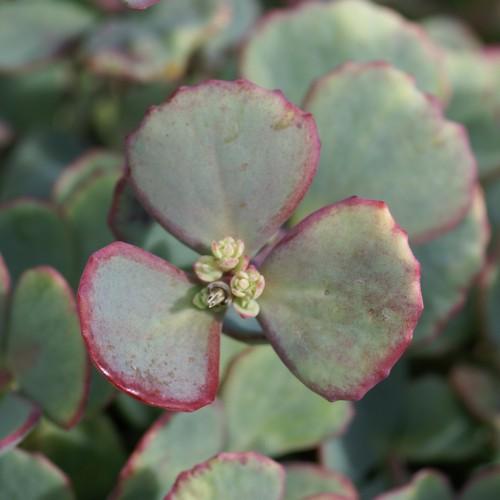
October daphne
Hylotelephium sieboldii
Cycle:
Herbaceous Perennial
Watering:
Minimum
Hardiness Zone:
3 - 9
Flowers:
Flowers
Sun:
Full sun
Leaf:
Yes
Growth Rate:
Low
Maintenance:
Low
Drought Tolerant:
Yes
Salt Tolerant:
Yes
Care Level:
Medium
watering
The October daphne (Hylotelephium sieboldii) should be watered on a regular basis. Aim to moisten the soil to a depth of 4-6 inches. When the top inch of the soil is dry, apply 1-2 inches of water. Generally, it's best to water in the morning to get the plant hydrated before the day's heat. Consider providing supplemental water during an extended stretch of hot or dry weather. It is important to note that this plant is very susceptible to over-watering, so be sure to allow the soil to dry out between waterings.
sunlight
October Daphne thrives under full sunlight for at least 6 hours a day, but when exposed to temperatures above 24˚C, its flower production may slow. The plant should be shaded from direct sunlight during the hottest parts of the day. It also benefits from receiving morning sun and later afternoon shade or dappled shade during the hottest hours of the day. October Daphne is best suited for USDA hardiness zones 3 through 8.
pruning
October Daphne should be pruned in late winter after any threat of frost has passed. Pruning should be done lightly, removing any dead or diseased wood, crossing stems and any shoots that are too vigorously growing. Cut back to a healthy flowering shoot, making sure that the primary stem is strong. Prune lightly to shape the plant and direct its growth and help maintain an overall desirable form. It is important not to prune too much or too often, as the plant can be weakened by this, resulting in fewer blooms.
